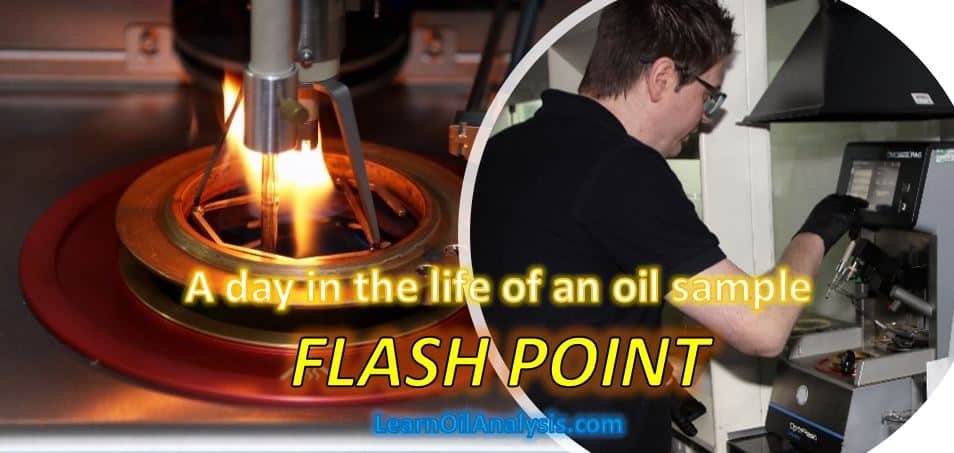Have you ever wondered what happens to your oil after you’ve sent it to our laboratory? In this blog series, we will be discussing some of the tests your oil may be put through and how they give us an insight into the health of your equipment.
Flashpoint
No, we’re not talking about the DC Comics crossover series which comes up when you google this word! Our flashpoint detects the safe handling and flammability temperatures of oils and fuels.
How it works?
Have a look at the images and captions below of the test taking place and then read the simple summary afterwards.
Closed cup flash point (PMCC Pensky Martin Closed Cup). The oil is heated in a metal cup that is a closed system. Periodically an igniter coil heats up and is dipped into the vapours above the liquid until the fluid flashes.
Open flash point (Cleveland Open Cup) – This is an open version of the PMCC with no lid. In this case the vapours can easily escape, so it is measuring vapours that are building up above the fluid and not escaping to atmosphere fast enough to avoid being flammable.
Fire point – this is a continuation of the open cup method until the fluid actually catches fire.
Summary of flash points
At the laboratory we test for flashpoints using two different methods; open and closed cup. This is because the flashpoints will be different depending on if the oil (or fuel) in question is stored in a sealed environment e.g., barrel/drum (closed) or if the oil is in an open, well-ventilated area e.g., once it is in non-pressurised machinery which is operating (open). The flashpoint in a closed situation will always be lower as the flammable vapours are unable to escape, which increases the likelihood of flashing or catching fire at a lower temperature. In most cases oils are not given a closed cup flashpoint as they have a much lower flammability risk than fuels. The exceptions would be thermal and fire-resistant oils as they have much higher operating temperatures and have a greater consequence if they caught fire e.g. in aircraft or underground in a mine etc.
The method for open and closed cup flashpoints are very similar, the main difference being the environment in which the test is conducted. Firstly, the oil is poured into the testing cup which is then placed in the open or closed flashpoint machine. The cup is gradually heated from below while a flame periodically moves over the top of the sample. As the temperature increases, eventually the sample will flash indicating it is nearing its highest safe handling temperature. On an open flashpoint the test will continue, however, on a closed cup the test will end here as we do not want the substance to ignite in a closed space! In an open cup flashpoint, the flame will continue passing over the sample and the temperature will increase until the liquid ignites and catches fire, at which point the safety features of the instrument causes a cover to lower over the flame removing the oxygen and extinguishing the fire immediately. An average engine oil will flash above 180c and catch fire above 220c, although the lowest flashpoints we have seen at the laboratory have been at room temperature e.g., due to high petrol contamination.
What does it tell us?
The flashpoint test tells us oils and fuels’ safe handling and flammability temperatures. This is important to know as these combustible substances need to be able to operate at high temperatures without being at risk of igniting which could cause disastrous consequences. For example, thermal oils legally have to be tested and proven to have a flashpoint of at least 20c (or as practical to achieve temperature in line with health and safety guidelines) above operating temperatures.
If an oil sample has an abnormally low flashpoint, our diagnosticians can see from other tests what might be the problem e.g., fuel dilution which would be detected by a low viscosity and the solution may be a complete oil change and checking the reliability of fuel injectors for leaks. One additional issue in thermal oils is the problem of light ends in which you can also read about this phenomenon in this article on the subject.
If you’re interested in learning more about oil analysis, press the contact button below to contact to a member of the team.

